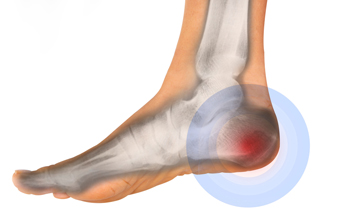How to Diagnosis Plantar Fasciitis
Monday, 03 December 2018 00:00 Many people who have heel pain are often diagnosed with a condition that is known as plantar fasciitis. The plantar fascia is the name of the tissue that runs along the bottom of the foot, which connects the heel bone to the toes. If this should become inflamed, plantar fasciitis may most likely develop. A proper examination is typically conducted to determine if this condition exists and this may include paying close attention to the arches of the foot, which may be exceptionally high, and pressing on the heel, which can pinpoint where the pain is originating from. Most patients who are afflicted with plantar fasciitis may experience heel pain as the first steps are taken in the morning. Additionally, if exercising is part of a daily routine, heel pain may be noticed after the workout is completed. Research has shown that recent lifestyle changes may play a significant role in developing this condition, which may include starting a new job, or spending extended periods of time walking or standing. This may be a result of the plantar fascia moving out of proper alignment. If you have heel pain, please consult with a podiatrist, so a proper diagnosis can be performed, and the correct treatment can begin.
Many people who have heel pain are often diagnosed with a condition that is known as plantar fasciitis. The plantar fascia is the name of the tissue that runs along the bottom of the foot, which connects the heel bone to the toes. If this should become inflamed, plantar fasciitis may most likely develop. A proper examination is typically conducted to determine if this condition exists and this may include paying close attention to the arches of the foot, which may be exceptionally high, and pressing on the heel, which can pinpoint where the pain is originating from. Most patients who are afflicted with plantar fasciitis may experience heel pain as the first steps are taken in the morning. Additionally, if exercising is part of a daily routine, heel pain may be noticed after the workout is completed. Research has shown that recent lifestyle changes may play a significant role in developing this condition, which may include starting a new job, or spending extended periods of time walking or standing. This may be a result of the plantar fascia moving out of proper alignment. If you have heel pain, please consult with a podiatrist, so a proper diagnosis can be performed, and the correct treatment can begin.
Plantar fasciitis can be very painful and inconvenient. If you are experiencing heel pain or symptoms of plantar fasciitis, contact Dr. Robert Graser from Graser Podiatry and Bunion Surgery Institute. Our doctor can provide the care you need to keep you pain-free and on your feet.
What Is Plantar Fasciitis?
Plantar fasciitis is the inflammation of the thick band of tissue that runs along the bottom of your foot, known as the plantar fascia, and causes mild to severe heel pain.
What Causes Plantar Fasciitis?
- Excessive running
- Non-supportive shoes
- Overpronation
- Repeated stretching and tearing of the plantar fascia
How Can It Be Treated?
- Conservative measures – anti-inflammatories, ice packs, stretching exercises, physical therapy, orthotic devices
- Shockwave therapy – sound waves are sent to the affected area to facilitate healing and are usually used for chronic cases of plantar fasciitis
- Surgery – usually only used as a last resort when all else fails. The plantar fascia can be surgically detached from the heel
While very treatable, plantar fasciitis is definitely not something that should be ignored. Especially in severe cases, speaking to your doctor right away is highly recommended to avoid complications and severe heel pain. Your podiatrist can work with you to provide the appropriate treatment options tailored to your condition.
If you have any questions please feel free to contact our office located in Boerne, . We offer the newest diagnostic and treatment technologies for all your foot and ankle needs.
Featured Articles
- July 2024
- June 2024
- May 2024
- April 2024
- March 2024
- February 2024
- January 2024
- December 2023
- November 2023
- October 2023
- September 2023
- August 2023
- July 2023
- June 2023
- May 2023
- April 2023
- March 2023
- February 2023
- January 2023
- December 2022
- November 2022
- October 2022
- September 2022
- August 2022
- July 2022
- June 2022
- May 2022
- April 2022
- March 2022
- February 2022
- January 2022
- December 2021
- November 2021
- October 2021
- September 2021
- August 2021
- July 2021
- June 2021
- May 2021
- April 2021
- March 2021
- February 2021
- January 2021
- December 2020
- November 2020
- October 2020
- September 2020
- August 2020
- July 2020
- June 2020
- May 2020
- April 2020
- March 2020
- February 2020
- January 2020
- December 2019
- November 2019
- October 2019
- September 2019
- August 2019
- July 2019
- June 2019
- May 2019
- April 2019
- March 2019
- February 2019
- January 2019
- December 2018
- November 2018
- October 2018
- September 2018
- August 2018
- July 2018
- June 2018
- May 2018








